There are lots of ways to drive in snow, but where I live in the in the western Cascades near Seattle, the snow is deep and wet. Too deep and wet to drive through. To travel in these conditions, you need to be able to drive on top of it. In this article, I will discuss how to drive effectively in these potentially treacherous conditions.
Snow shoes are used to walk on top of deep snow in order to increase the surface area under your feet and reduce the pressure loading on the snow. This happens by distributing the weight of your body over a much larger area. If the area is big enough, the snow will support the weight of your body. This same concept can be used to help your vehicle ride on top of snow.
But how? Big tires help, but the real key is reducing the air pressure in the tires. The goal is to get the tires as flat as you can while keeping them on the rim so they hold air.
Snow is unique because it rarely will push the tire off the rim like a rock will. However, every tire/wheel/vehicle combination works differently. On my Wrangler Unlimited I have 37” BFGoodrich KO2 tires on AEV Salta wheels. Depending on conditions, I have been able to air-down as low as 3 psi without incident. I don’t always need to go this low to get the vehicle to “float” enough to travel over the snow. The key here is to experiment until you know what works for your set up in the type of snow you are in. I usually start at 7 psi and go lower if needed. The real key is that you want to tire to go flat looking, which increases the surface area presented to the snow. As pressure reduces, the tire widens, but mostly the contact patch gets longer, like a snow shoe. Less air pressure makes the contact patch bigger. It amazes me the difference 1 psi can make. The difference between 5 psi and 4 psi on my vehicle can be the difference between driving over the snow and becoming hopelessly stuck.
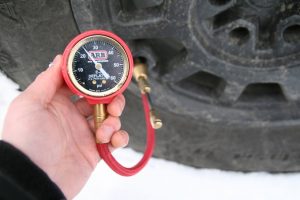
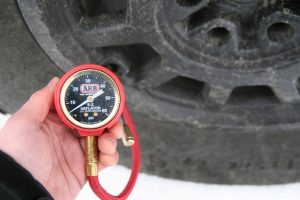
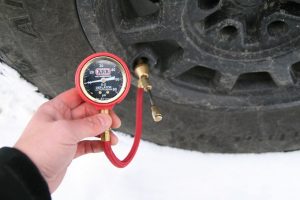
How low is too low? When the tire won’t hold air, you’ve gone too far. That can be 2 psi, or over 10 psi. It depends on your tire and wheel combination and how heavy your vehicle is. There are two risks when running a tire at very low air pressures. The most obvious is having the tire go completely flat because the tire bead falls off the rim. This is called losing the bead. There are various ways to fix this, but the easiest is to simply jack the tire up so it is not holding air, use a ratchet strap around the tire to push the beads out and add air so the tire resets the bead. The second, less obvious, risk is having the wheel spin inside the tire, which takes the wheel/tire system out of balance. If this happens you probably won’t know until you air up and are driving home at highway speed. To fix this you need to have the tire rebalanced by a tire service center, which may be free depending on where you buy your tires.
Ok, you are aired down. Now what? When driving on top of snow it is important to use driving finesse. Low wheel speed and gentle torque is your friend. Think 4-low range. As the tire rotates, it packs the snow that supports the vehicle.
If you spin the tires, especially with a mud terrain tire, you will dig through this layer of packed snow and likely become high-centered. “As slow as possible, as fast as necessary” certainly applies here. If you start to spin, stop the vehicle using the brakes if necessary to stop the spinning wheel. Back up if you can, and slowly progress forward using a little momentum to get you through. If you get struck, it is best to recover the vehicle earlier than later as it is much less work to recover a little bit stuck than buried to the frame. But play around and experience will be your best guide.
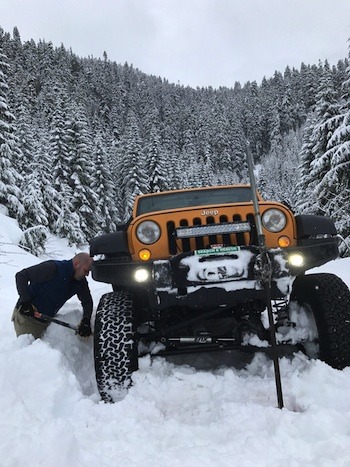
Make sure when you first try this you go with other vehicles and have recovery gear. Plan ahead and turn around before it is too much. Mostly, have fun and stay safe.
Article and Photos by Ken Beahm.
Ken has spent 7 years as a volunteer for the Snohomish County Search and Rescue where he leads the 4×4 team. He’s been an off-road driving trainer for 4 years and has been off-roading for 25 years. For info on trainings- sar4x4training@gmail.com







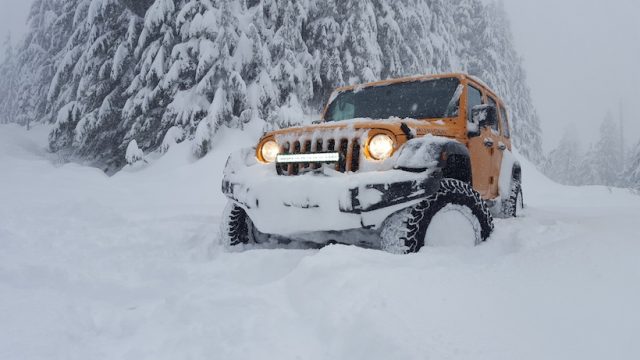
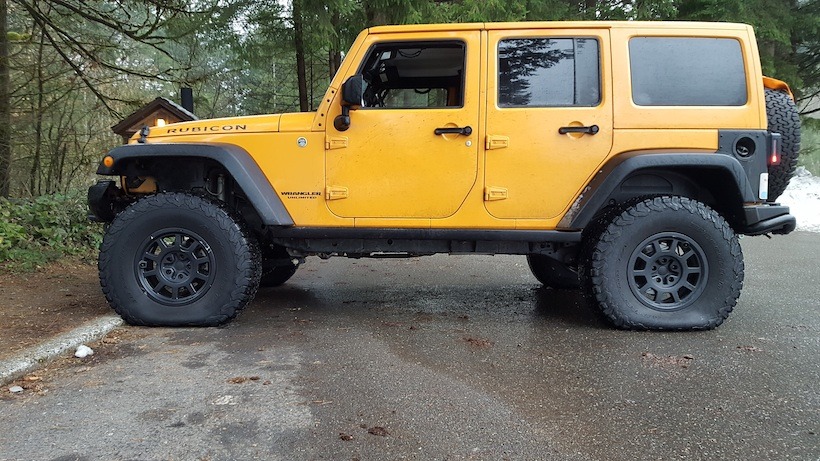
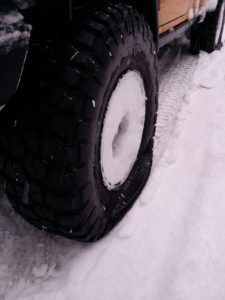
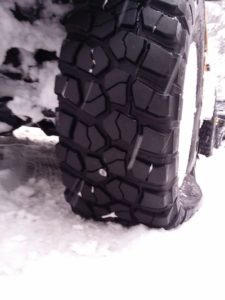
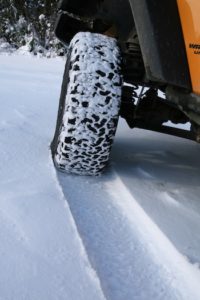
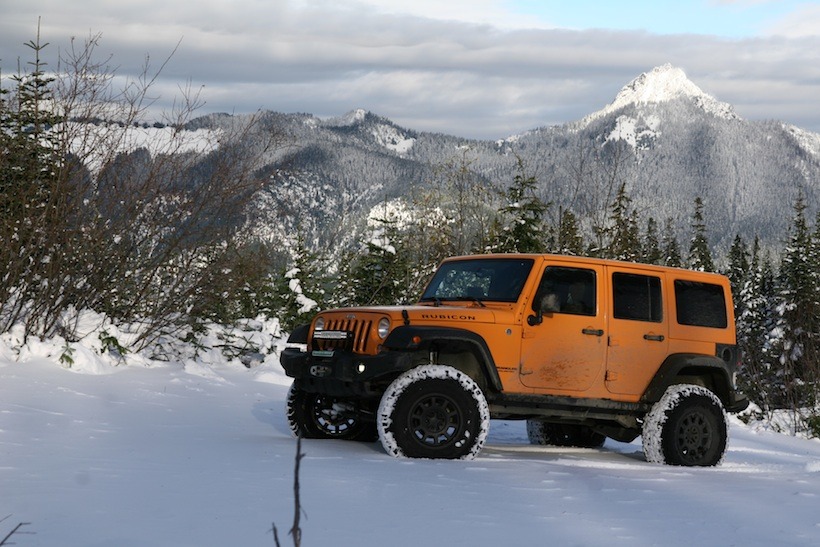
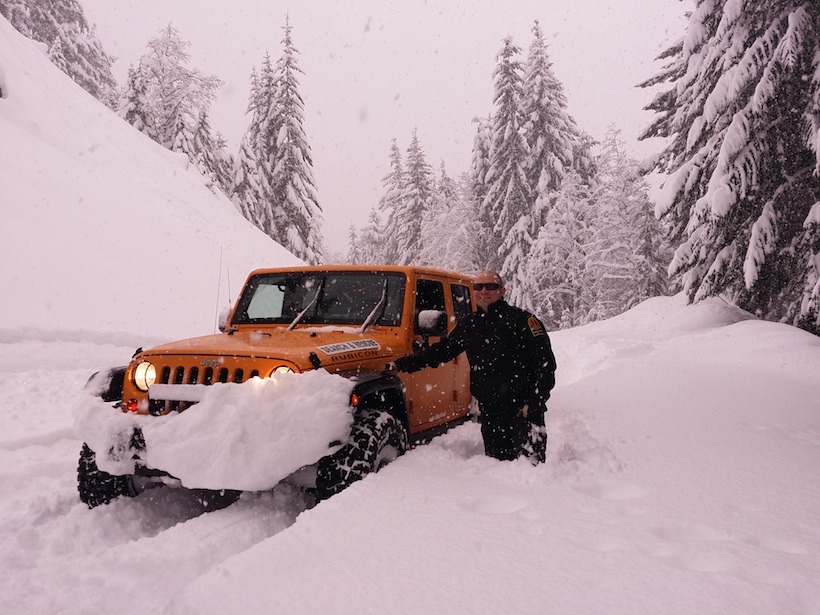
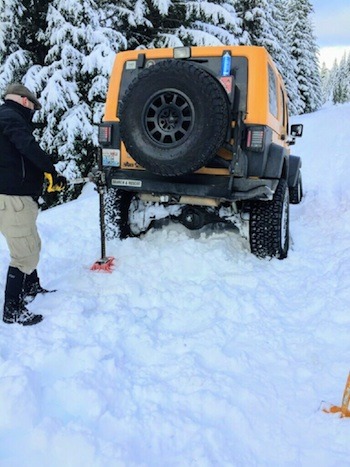
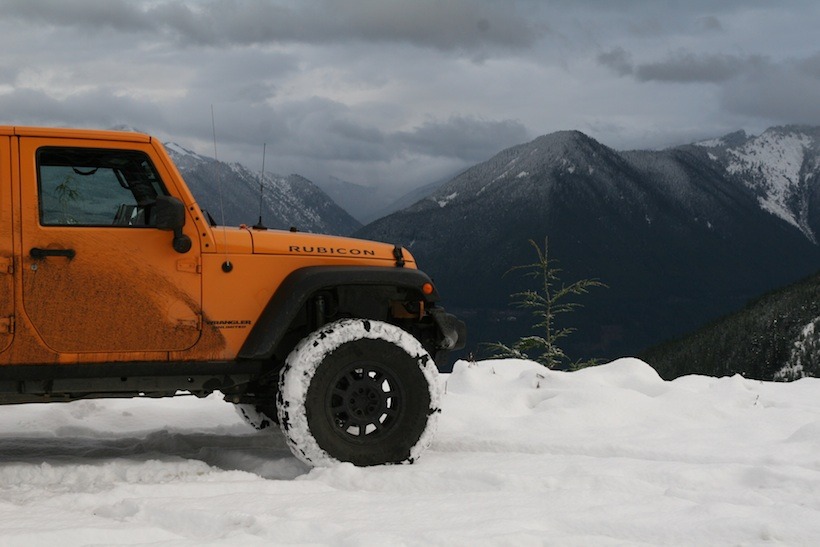








Good article. I might end up in some snow in a few weeks.
Nice write up Ken. It’s always fun to go snow wheeling with you. Stay safe my friend.